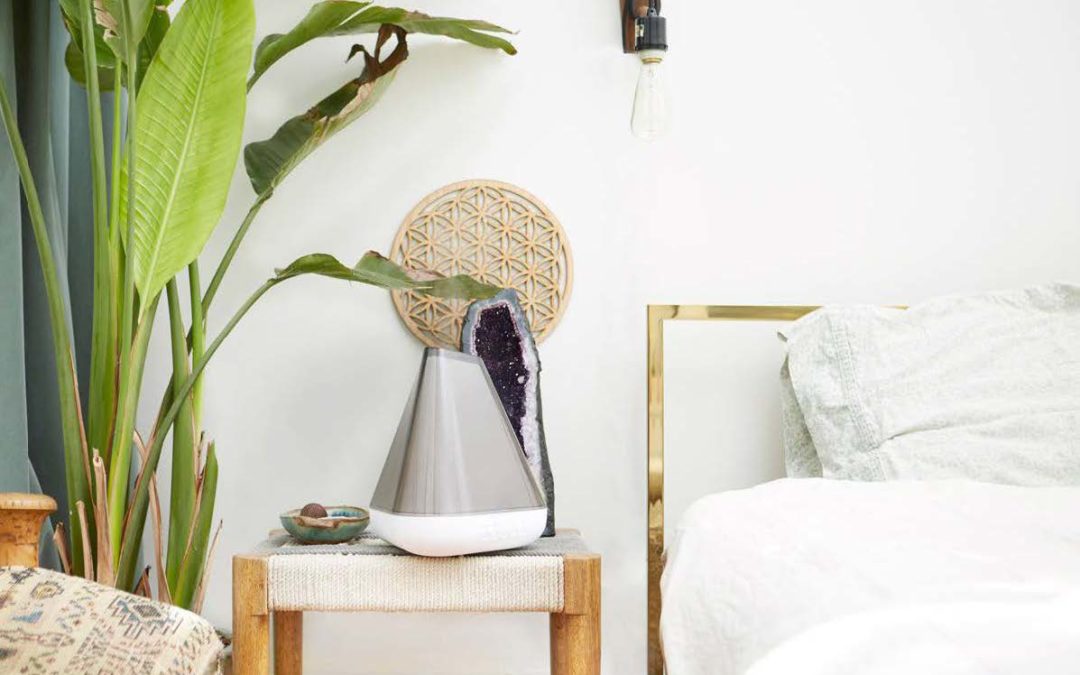
by Jasmine | Feb 9, 2018 | Yoga Therapy
Welcome a brand new guest blogger to the ROOT tribe, Interior Designer Mia Yamada! Learn how Mia tackled a turbulent year by focusing on her favorite form of self-care — creating her home sanctuary.
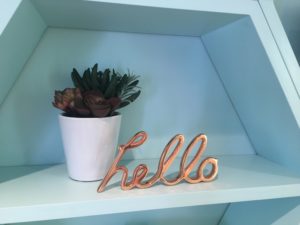
Whether big or small, our homes are our refuge and safe spaces from the craziness of our busy lives. In the outside world beyond our homes, I often deal with lots of unpredictability – traffic, stressful work situations, fast walkers (or the dreaded slow walker), long lines at Trader Joes (I’ll endure anything for their Riced Cauliflower Stir Fry), intense (but inspiring) spin class instructors. And for so many of us, our homes – condo, apartment, sublet, illegal sublet (sssh!), or house – are our sanctuaries, the one place where we know what to expect and can have some peace and control.
As an interior designer, a lot of my work has been about co-creating these peaceful and safe spaces with my clients. My core skillset involves listening to my clients, understanding what “peace” means to them, and translating that into spatial design, paint colors, accents and furnishings. Nothing makes me happier than welcoming a client into their new or redesigned home and seeing their faces light up and bodies relax – this is their new sanctuary.
This past year, however, I realized that I was in need of revamping my own sanctuary after experiencing a trifecta of changes all in a three month period. Right after moving in with my boyfriend, we went through a bad break-up. And since home is where I feel the most grounded, I started to feel very untethered and almost afloat. To make matters worse, the break-up had a cascading effect that led to some positive – but still disruptive – changes including moving to a new city where I knew very few people and beginning a new job in a relatively new area of design (from interior design firm to architecture firm). Everything familiar was now gone and although I had new business cards and a home address, I still couldn’t figure out who I was anymore.
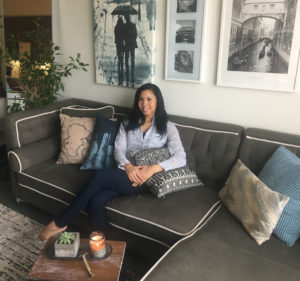
At home in Austin, TX with our resident Interior Designer, Mia Yamada.
One way that I began to heal was by treating myself like a client and making my new apartment my sanctuary – a place that I could look forward to at the end of a long day. It’s a safe space for me full of my favorite colors (blues & greens), things that make me happy (art, scented candles & greenery), and pictures and memories that remind me of who I am and that I’m not alone. This process helped me to feel grounded and settled while so many things were happening/changing around me. I finally felt anchored in my new city, like I’d carved out my own little niche, which gave me the confidence to move through the change and set myself up for the next chapter.
For those of you going through a big life change, or simply hoping for a more mindful space, invest in making your space your sanctuary, a reflection of you and somewhere you love to be. Just as in yoga, it’s important to first set an intention for the environment you want to create. In design we have a more visual representation of this which we call a “moodboard.” These are created for every client I work with and are used to tell the story of the vibe that we’re trying to create. We fill them up with shapes, textures, inspiration images, and even words to set the intention and keep us headed in the right direction. Think pinterest in real-life.
To help you out, I’ve done some of the leg work for you to start your own pinterest/mood board. Here are the five steps I took during my recent life transformation and the sites that gave me inspiration, and continue to populate my mood boards.
1. Declutter & Organize
Often times our inner world reflects our outer world and if our space is disorganized and cluttered, our lives can feel that way too. In order to restore balance, take the time to organize your space and free yourself from clutter. A tidy space allows you to not only feel more relaxed in your home, but also lowers anxiety. It’s important to get rid of the old and make space for the new, especially when we are trying to move forward

Get creative with containers and shelving to remove the fuss from finding your favorite pair of shoes, earrings or other accessories.
in our lives and move into a new season or chapter. Commit a few hours, a day, a weekend or whatever your schedule allows to organize your space. Throw-out, sell or donate your old items, and make sure the things you are keeping have a specific place in your home. There are some great sites out there that even let you make a little extra money from this tidying up endeavor. Check out Letgo or Poshmark.
Also, to maintain a clean space, get in the habit of practicing the 2 minute tidy up – take 2 minutes before bed to pick up any excess clothing, put dishes in the dishwasher, organize papers, etc. – that way when you wake up in the morning your space will be fresh and clean to greet you.
My mood board is filled with mostly items from The Home Edit – a snappy site that mixes the practical with the pretty. I follow them on Instagram to keep my eyes tuned to order.
2. Incorporate Greenery
Now that you’ve decluttered and organized, it’s time to decorate and make sure to add plants as part of your scheme. Not only are plants beautiful and bring life to a home, they help you breath easier by increasing oxygen levels and purifying the air, boost your mood and promote healing, and lower anxiety and your risk for illness – what’s not to love! Take a trip to your local plant nursery where you can get all sorts of advice about which plants are best for your home.
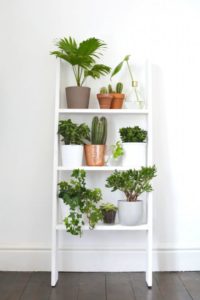
Mix and match varietals for a combination of form and height.
I personally love succulents because of the muted tones, pillowy shapes and they’re hard to kill. Seriously, these things might look a little droopy, but they come back to life the moment you give them a little love, sun, and water again. You can also get into a new habit of getting fresh cut flowers every few weeks to bring in green and fragrance. Have fun with it, experiment and get your green thumb on!
My mood board has big bursts of green in different shapes, sizes and varietal from Blue Flamingo and Burkatron.
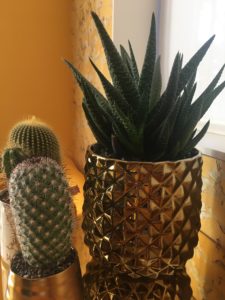
Cacti are so classic and another low maintenance plant. Mix the southwest vibe with a super glammed out gold vase for a little fun. Complements of #BumbleHiveLA.
3. Remember the Entryway
Entryways can sometimes be missed opportunities but you have the power to change that! Don’t let this be a forgotten space where you just set down your keys or hang up jacket. Your entryway can be beyond basic and really set the tone of your home and be an area that makes you feel invited into the space. Get a new doormat, add an entry table for a bouquet of your favorite flowers, or hang a painting or picture you love. Try adding an ottoman with a pop of color that gives you an immediate place to sit and decompress after a long day. It doesn’t have to be big, just bring something to this area that makes you immediately feel welcomed and sparks joy so you’ll be greeted with happiness when you walk in.
I’ve found mood board entryway-inspiration from a few sites like Tiny House Giant Life and Sugar and Charm. They really nail this “after the front door” space.
4. Joyful Decor
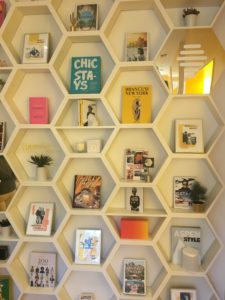
For some joyful notes, create a wall of shelves to display your favorite books, candles and plants. Another one from the the savvy #BumbleHiveLA team.
Decorate your space with colors, furniture and decorative items that make you happy and promote positive feelings. Do you have family or travel photos that remind you of a time of strength and possibility? If so, get them blown up to be large enough to hang, invest in nice frames, and give them a prominent space on your walls.
During a previous move, I made a photo montage of all of the cities that meant “home” to me – Oakland, Brooklyn and Los Angeles. I put them in a sleek frame and set them somewhere I’d see everyday to remind that those places were always with me.
If you love throw blankets and pillows, pick out a variety in colors and textures make you want to get wrapped up in them. And remember, everything doesn’t have to match or be the same style to look good – the important thing is that the pieces spark positive feelings, and are things you love to look at and make you smile. Mix it up, experiment, and explore what makes you excited – there is no right answer except where your inner compass leads you.
Take a minute to check out these mood board finds that gush joy, warmth and “the journey” to me from Apartment Therapy and Decordemon.
5. Sleep Well
As mentioned in a previous ROOT post (Sleep right, not tight), good sleep is an essential part of functioning well and being our best, which means investing in your sleeping space is probably the best use of your money.
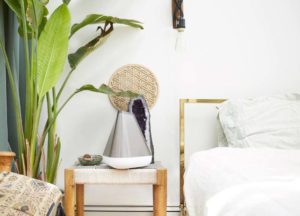
The Eva Diffuser by Pilgrim. Invest in a high-quality and beautifully designed diffuser to open up your senses and balance out your space.
The goal here is to find ways to promote relaxation and serenity. Splurge on a new set of sheets, a new comforter, great set of pillows, and maybe even a new mattress. All of these items really can make a world of difference between falling asleep and waking up in a restful environment. Especially after my break-up it was also critical for me to reclaim my sleeping space as my own. Another tip is to use calming cool colors in the the bedroom – whites, blues and greys are nice and create a relaxing atmosphere. Dimmable lighting can add to a feeling of serenity, as well as calming art with scenery or ocean views.
I recently invested in an oil diffuser and some essential oils to help relax me at night and bring calm to my other senses like smell and sound. There are a lot of diffusers to choose from, but my favorite one is by Pilgrim Collection as its hip modern look and clean lines compliment my room decor and bring serenity to my space.
I love the subtle sleep tones of these pins. They are relax-tastic in the best way.
Want to read more about reclaiming your space and finding your home-oasis? Check-out my go-to reading list for my personal and professional designs:
About Mia Yamada
Mia Yamada is an Interior Designer based in Austin, TX. As a former dancer and fitness instructor, she strives to incorporate wellness and balance into her design work. Follow her design adventures and inspiration via instagram @mia.yamada.
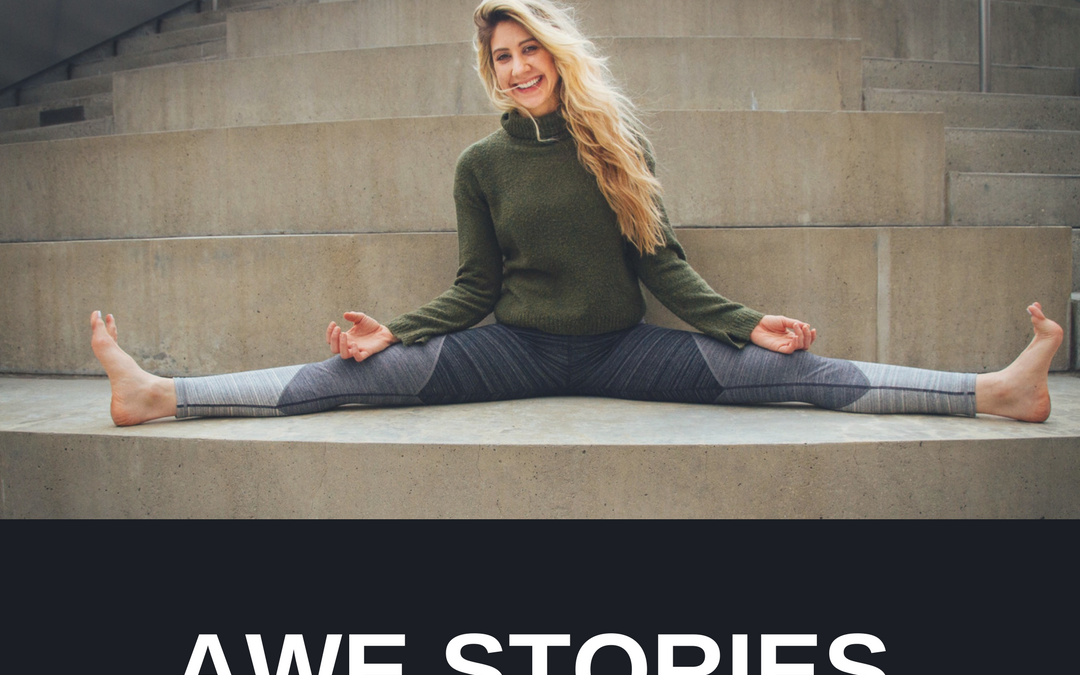
by sarah | Feb 3, 2018 | Press, Yoga Therapy
September is International Yoga Awareness Month, which means each episode this month will feature different practices and practitioners of yoga to share with you how and what yoga is a transformative self care practice. Jasmine Rausch is the founder of ROOT Yoga Therapy, based out of Los Angeles, CA. Jasmine shares with us her struggle to find her passion, her practices of yoga and meditation, ultimately finding her calling as a Yoga Therapist, how she was able to free herself from chronic pain and asthma, and how she approaches healing with others from an integrative medicine approach- addressing the whole person instead of one particular symptom or area of the body. Listen to hear Jasmine’s recommendations for starting your own yoga practice and where you can find Yoga Therapists near you to explore greater healing.

by sarah | Feb 3, 2018 | Press, Yoga Therapy
In this next installment of the Ted in Your Head Interview Series, Ted interviews Jasmine Rausch, Certified Yoga Therapist based in Los Angeles, California. Jasmine specializes in working with a wide range of chronic health conditions chronic pain and autoimmune disease to anxiety and depression. In this interview, Jasmine discusses her journey from horrible back pain and asthma to being pain free through the practice of yoga therapy. After practicing yoga for 10 years, she entered teacher training at the Clinical Yoga Therapy Program at Loyola Marymount University. You may have heard of yoga, but listen to Jasmine tell you about yoga therapy in this wonderful podcast.
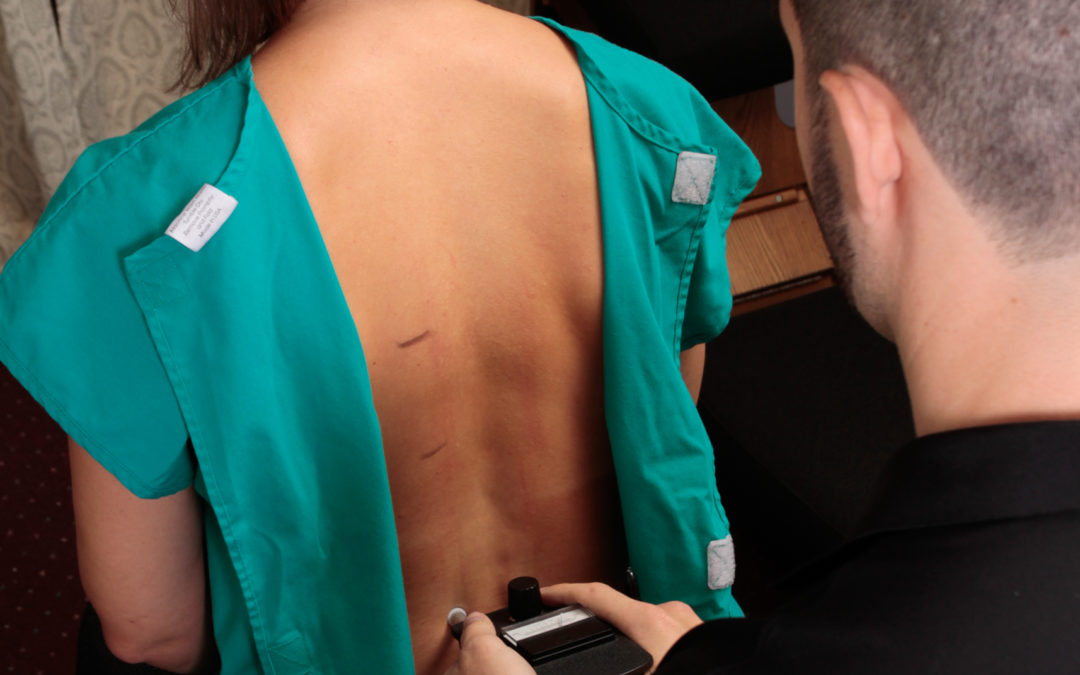
by Jasmine | Jan 25, 2018 | Yoga, Yoga Lifestyle, Yoga Therapy
BIG “Thank you” to Dr. Lars Gunnar @vitalformchiro for not only being ROOT’s first guest blogger of 2018, but for also sharing his personal story that led him to becoming a Gonstead chriopractor and professional perspective on spinal health, its vital role in preventing disease, and spinal health tips you can integrate into your life today. Enjoy!
Routines can be both good and bad. They can keep us efficient and safe but also can inhibit us from growth. During high school, I had a very basic routine that revolved around one main focus: football. Football dictated my sense of the world and my obligations fluctuated between two priorities: 1) prepping and training for games and 2) pursuing the ladies (okay, so maybe there were two points of focus to my routine). It was a much simpler time when there wasn’t much to balance and I was ready for that “smooth sail” right into college sports.
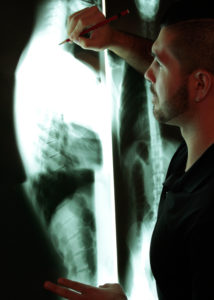
All of that came to a screeching holt during a game senior year. A single bad hit not only ended my football career but also left me with blinding back pain. My whole world, my routine, was flipped turned-upside down. This pain prohibited me from practicing, playing or even sitting for longer than 5 minutes at a time. Can you imagine not being able to even sit? For those of you who’ve experienced this kind of physical trauma you know the toll it takes on both your body and your mind.
Overnight I felt like I was robbed of everything: my comfort, my dreams, and my mobility. My focus shifted from football and ladies to finding a solution to my pain and a way back to my life. My new routine consisted of a more complex round-robin style buffet of neurologists, orthopedic surgeons, and physical therapists all of whom were only able to provide short-term relief.
I tried just about every specialist under the sun until a family friend suggested a chiropractor who specialized in the “Gonstead protocol,” which consists of a series of X-rays, exams and neurological testing before any adjustments are made. The key difference was that his process focused the alignment on the 1-2 problem vertebrae instead of trying to tackle my entire spine. He was able to tell me exactly what was wrong, where and how I could correct.
The results were nothing short of a miracle. Now that I knew what to properly focus on, my routine changed again in an instant. I could move my whole body, sit for any duration, and finally sleep. This wasn’t a temporary fix but rather a shift in overall alignment and spinal health. I learned that the key to my wellness was my spine. I was so inspired by this transformation that I to became a Gonstead trained chiropractor to help others on their path to healing.
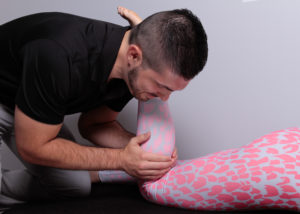
Throughout my day, I am incredibly fortunate to serve a diverse population that need care: acute injuries, chronic pain, infectious diseases, chronic diseases – all coming to my office for help. Through patient education and the experience of specific scientifically measured adjustments, my patients encounter first-hand how a functioning spine is a cornerstone of a healthy life.
Tips from a chiropractor
The feelings of frustration and panic that I felt right after my injury are something that everyone can relate to at some level, especially today. We all seem to be caught in a loop of organized chaos and a routine of short-term fixes. Even without any physical injuries per se, our ongoing quest to find the ever elusive “work life balance” takes a physical toll on our bodies. If I just look at Facebook and Instagram alone, it seems like everyone is working over 10 hour days, nurturing friends and family, working on side projects and still finding time to snap a flawless looking selfie. The more we focus on doing, the less we stop to align our body’s and mind’s best interest.
The truth is that many of us are just trying to survive within a demanding society and our biological functions (like breathing and digestion) as well as our needs (like sleep) have been drastically impaired. Stress, exercise, nutrition and sleep all play a role on our body and our nervous system because of how they are so closely tied to our spine.
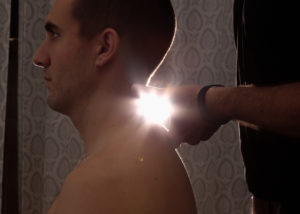
In 1921, Dr. Henry Winsor (a medical doctor in Haverford, Pennsylvania) became fascinated with chiropractors and osteopaths and their ability to treat people suffering from conditions like heart disease, kidney disease, and lung disease without drugs or surgery. Winsor was inspired to investigate these practices and discovered that there was a near 100% correlation with the internal organs having some form of disease and the same area of the spine being mal-positioned. He also found that changing spinal curves in various degrees of flexion or extension changed the blood flow and nerve flow to the brain and organs.
What does this all mean? The way we move our spine influences everything and lack of movement impacts our organ health which could leave us vulnerable to diseases. Our spine gets nutrition from movement, which pushes nutrients in and pulls waste products out (like the inhales and exhales in breathing). Lack of spinal mobility or a toxic environment such as chronic inflammation or nutrient deficiencies will affect this process. So, what we put in our body is just as important as how we move our body.
When I work with my patients who suffer from similar and worse types of pain, diseases and discomfort, my approach is truly comprehensive. I encourage the following mindful movements and routines that focus on flexibility and also stimulate the nervous system in a positive way.
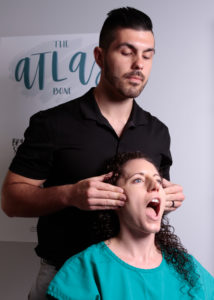
Reduce Stress: All of us are quite familiar with physical exhaustion- not having anything left in the tank to push through a workout or run another mile, but we are still so behind in prioritizing our mental and emotional exhaustion. These pain points look and feel quite a bit different than an achy back and some of us ignore it entirely.
Most of us have at least heard of the cognitive benefits of managing our stress which range from improved short and long term memory, boosted mental endurance and strengthened creativity. But more and more studies are showing that reducing stress can also have enormous impacts on our bodies. By decreasing stress, we can reduce the way we digest and absorb nutrients – vital to our spine, reduce systemic inflammation (whole body compromise/ contributor for chronic pain), strengthens our immune system and quite literally helps you live longer. What I recommend to my patients and myself:
- Quieting and slowing your mind for a short time before you start your day or when you have a spare moment
- Take periodic quiet minutes, yoga, self-talk and anything else that fills up your bucket (my personal favorites which keep me grounded so I can give my best to the next patient)
Take a breath and slow yourself down before you start your day to be the champion of your day.
Prioritize Movement: Spinal extension aka back bending isn’t just for stretching but actually increases blood flow and nerve activity to the brain by at least 30%. Don’t forget to stand up during the day not just because it’s good for your spine and joints but to increase your energy, ensure you’re getting proper oxygen and nutrients to your brain. What I recommend to my patients and myself:
- Yoga asanas (poses) also have a muscular component and a visceral (organ) component and are great for feeding nutrients to the spine.
- Spinal rotation, lateral bending and flexing all stimulate different organs to speed up or slow down with the ultimate goal of bringing balance to the body.
Get up and move, not just for aesthetics but for your entire well-being.
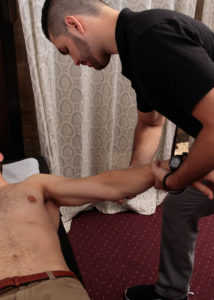
Minimize Toxins: I know that most of us aren’t actively seeking toxins – unless you’re a bad guy from a super hero movie – but simply being more conscious of what we buy can have tremendous impacts on our spinal health. What I recommend to my patients and myself:
- Read food labels to make sure you are limiting refined sugars, artificial ingredients, preservatives and fake sugar substitutes reduces inflammatory processes. Some sugar substitutes have been shown to contribute to dementia, alzheimers and other neurodegenerative disorders.
- Drink clean- purified or filtered water. Tap water is known to have trace metals that are detrimental to the health of our nervous system. Copper, mercury, manganese among other toxins are in tap water and these do not belong in our bodies at high levels.
- Alkaline water has gotten quite a bit of traction over the recent years and the scientific data on it is still mixed. Does it affect your cellular PH in a positive manor? Maybe, but at the very least you are not consuming tap water or dead water (no positive benefit).
- Sleep with your phone away from your bed- radiation emits from your phone and has been shown to be absorbed into neural tissue (YOUR BRAIN!) and cause damage to DNA.
- Having a healthy environment in your body will help preserve health along with stimulating healing where it is needed.
“The preservation of health is easier than the cure for disease” – B.J. Palmer.
Get the Right kind of Sleep: Sleep has now been ranked second next to only food intake for importance in weight reduction and restoration of health. You need a nightly reset to allow hormones to stabilize, digestion and absorption to occur and recharge your learning/attention pathways in your brain. What I recommend to my patients and myself:
- “Sleeping is a dangerous sport,” which simply means that position matters. There aren’t many activities we do for 6-9 hours at a time and sleep position can help or hurt us in our recovery process. Side and back sleeping are optimal positions while keeping the head in a neutral position.
- If you want to avoid being hunched over later in life than don’t sleep curled up into ball, or using too many pillows which can all harm the spine.
You are what how you sleep.
The spine is the bridge between the brain and the body and the body to the brain. Having a properly functioning spine is the key to a metabolically balanced nerve system, long lasting health and an injury free life. Having your spine checked by a qualified practitioner that knows spinal mechanics, the art of a spinal correction and focuses on overall well-being is paramount.
For specific spinal corrections a Gonstead trained chiropractor will be your ideal practitioner. To find one near you there are multiple directories www.gonstead.com, www.gonsteadseminars.com. Choosing a practitioner can be difficult depending on your location as there are about 500 practicing Gonstead chiropractors in the world.
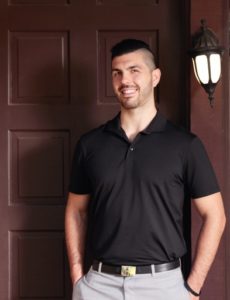 Dr. Lars Gunnar DC, BS, is a family chiropractor and the founder of Vital Form Chiropractic in Pasadena California. A graduate of San Diego State University and Southern California University of Health Sciences. Along with practicing the Gonstead system he has advance training in sport and extremity injuries, pregnancy care, pediatric development and scoliosis. Several individuals were instrumental in learning these skills including: Dr. Brad Ping, Dr. David Fowler, Dr. Jeremiah Thompson, The Gonstead Seminar staff, Dr. Ian Rossborough, Gonstead Methodology Institute and The Gonstead Clinical Studies Society. Dr. Gunnar’s goal is to inspire people to take control over their own health and to strive to be the highest expression of themselves.
Dr. Lars Gunnar DC, BS, is a family chiropractor and the founder of Vital Form Chiropractic in Pasadena California. A graduate of San Diego State University and Southern California University of Health Sciences. Along with practicing the Gonstead system he has advance training in sport and extremity injuries, pregnancy care, pediatric development and scoliosis. Several individuals were instrumental in learning these skills including: Dr. Brad Ping, Dr. David Fowler, Dr. Jeremiah Thompson, The Gonstead Seminar staff, Dr. Ian Rossborough, Gonstead Methodology Institute and The Gonstead Clinical Studies Society. Dr. Gunnar’s goal is to inspire people to take control over their own health and to strive to be the highest expression of themselves.
To keep up with Dr. Gunnar follow @Vitalformchiro on IG and to learn more about his practice visit: vitaformchiropractic.com (coming soon!)
Ready to book your appointment with Dr. Gunnar?
Contact:
Vital Form Chiropractic
Institute of Functional Biomechanics
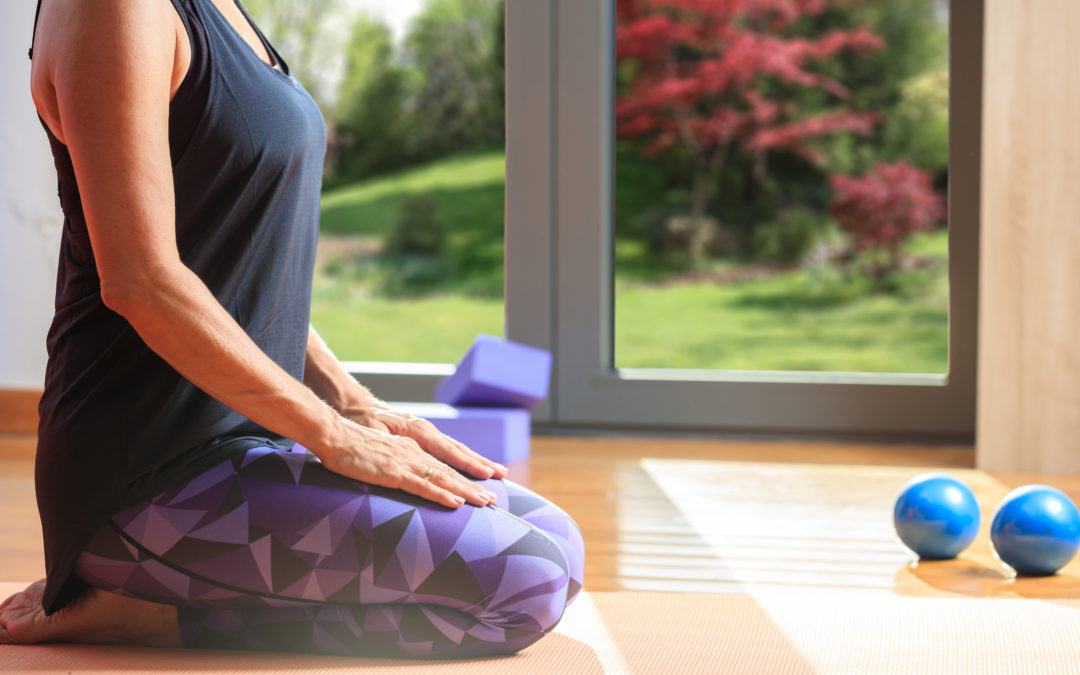
by nobody | Dec 15, 2017 | Yoga Therapy
We’re in the thick of the holiday season, which for many of us means a time for reflection and gratitude. Especially with the new year, a lot of my clients are starting thinking about concrete ways to make positive changes and jump start personal growth in 2018.
This happens to be one of my favorite times of year, not because of the gifts and parties – although both are fun – but because of the heightened interest in self-improvement that is buzzing everywhere. I can’t turn on the TV, scroll through my Insta-feed or even drive down the street without ads and articles targeting this renewed sense of discovery and development. And since the ROOT team focuses on healing through yoga therapy principles and practices all year round, we love to see everyone get into the spirit self-care!

So, whether you’ve caught the self-improvement bug of the season (I’ll spare all us of the dreaded “R” word) and ready to jump into your own practice, make changes to your existing practice, or invite someone to start a practice, we’d like to help you on your journey. Wherever you are, there are some basic yoga therapy necessities that no yogi should live without.
As you ponder gifts for yourself or your loved ones, consider these yoga therapy starter kit “must haves.”
The Mat: I know it’s tempting to grab a simple sticky mat from your local sporting goods store or Whole Foods, but the truth is, having the right mat can seriously impact your practice and overall experience. To me, there can be nothing more disruptive than slipping and sliding in down-dog or feeling your spine or knees pressed against the hard floor in savasana or child’s pose.

I am constantly getting questions about what mats are best and worth investing in. Like your yoga practice, mat preference is individual. From comfort to price, we all have different needs and likes and it is literally impossible to test drive every mat out there. So, how do you determine the best fit for you?
Well, you’re in luck! Reviews.com recently came out with a complete yoga mat buying guide. Their research and development team went out into the field, interviewed various teachers and did their own testing to give you the scoop on everything you should and need to consider.
- Check out the full article HERE to see their top 5 best yoga mat picks and read all they’ve had to say about mat thickness, maintenance, quality, and portability!

The Blocks: This prop is considered one of the most widely used props in yoga. Blocks are an excellent prop that allow practitioners of any level find space and freedom in various poses. With the use of yoga blocks you can stretch, strengthen and align your body without causing strain, stress and injury to your muscles and joints.
Remember, a primary aim in yoga poses is to lengthen the spine and improve spinal health (Yoga Therapy: Alignment and Spinal Heath). Whether you’re working to develop more flexibility or suppleness in your body or simply need additional support to stabilize yourself in a particular shape, blocks are your buddies.

Like mats, blocks come in different shapes, sizes, and materials. Foam, wood, and cork are the most commonly found materials used in local gyms and studios. When choosing a block, material is something to consider because the weight of the block can affect your practice. For example, if you’re instructed to hold a block overhead in Mountain pose, prepare for your arm muscles to really be worked with a heavy wood block. Also, note that the most regularly used size is a rectangular shaped 9″ x 6″ block. This shape and size offers accessibility, versatility, and steadiness to maximize the quality of your practice.
Here are a few that I like to recommend to new and growing yogis:
- Manduka Recycled Foam Block: made of high density recycled foam. It is slip resistant (great for those sweaty palms), durable, yet still light in weight which makes it ideal for beginning practitioners.
- ReCORK 198 Block: made from 198 recycled wine corks! How cool is that? These blocks are sturdy and non-slip. As mentioned above, the cork material will make these blocks a bit heavier than a foam block. So, if you are ready to build strength, this could be the block for you! Lastly, save your wine corks this holiday season and donate them to ReCORK. Click HERE to find a ReCORK collection partner near you!
- 3 Minute Egg’s Multipurpose Namastegg: made from 100% biodegradable material. Now, these blocks (if I can even call them that) are special because they are not the traditional rectangular shape. As suggested in the name, they are shaped like eggs! The Namastegg is made with rounded wedges which makes the perfect to support our body’s natural curves particularly in restorative postures. Check out their buyer’s guide to determine which Egg is right for you!

The Therapy Balls: Yoga therapy balls (aka: trigger point balls) are not always thought of in the context of a yoga practice, but boy they should be! Therapy balls work deep within your tissues to release trigger points; a tight area within the muscle tissue that causes pain to other parts of the body. For example, when the muscle at the top of your shoulder (trapezius) has a trigger point it can refer pain up the side of your neck and head potentially leading to headaches.

Often times, people come to a physical yoga practice to loosen tight muscles, build strength, reduce stress, and improve physical pain. One of the reasons why therapy balls should be a staple in your practice is because myofascial pain from trigger points is frequently over-looked as a possible source of pain by those seeking relief. Second, muscles can be challenging to strengthen if trigger points are present because the muscle is already contracted. Adding therapy balls into your routine can not only help reduce pain, but can also open up space for your muscles to move through their full range of motion. Truth be told, I don’t leave home without mine!
- The Yoga Tune Up Therapy Balls are my go-to choice for anyone. These balls are small enough to target specific muscle groups and dense enough to relieve the tension without being too dense to exacerbate pain or create injury.

The Essential Oils: Okay, you all know that I’m a nut about oils so you had to know that I’d add this to the list. I won’t go on and on about this in this specific blog (I’ve already done so here “The Essentials of Essential Oils: Tip, Tricks, and Treats”–you’re welcome), but I will just make another plug on the value of incorporating oils to help open up your airways, shift you into a state of relaxation, and soothe muscle aches and pains.

Here are my suggestions for oils I can’t practice without:
- Start your practice with lavender, chamomile or DoTerra’s gounding blend “Anchor” to help bring a feeling of calm and establish a sense of steadiness and connection with self.
- Use oils like peppermint or eucalyptus to open up your airways, decongest and ease breathing.
- Before and/ or after your practice, apply DoTerra’s “Deep Blue” (the essential oil version of Icy/Hot) to loosen tense muscle or soothe aches.

I hope you feel ready to take your practice into 2018! Please don’t hesitate to reach out with questions or simply comment on how these tools have helped you!
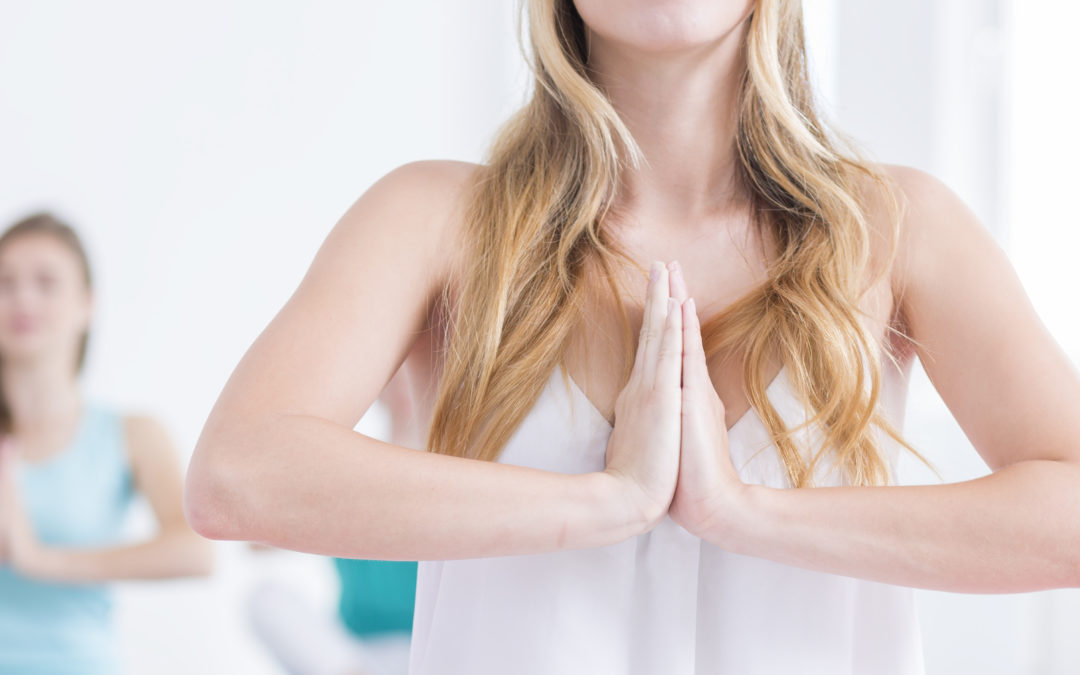
by nobody | Nov 23, 2017 | Yoga Therapy
Autumn (or fall depending on what you like to say) always makes me think about tradition and gratitude. Yes, I realize that the thanksgiving holiday was named in quite the literal way – not a lot of guesswork needed to breakdown what we’re supposed to be doing on that day. And then tradition comes in because each of our families, friends and tribes all celebrate in their own special way. Maybe there is turkey or maybe not depending on where your loved ones have landed on the whole “is there a way to make turkey that is NOT dry” debate.
In my family, thanksgiving traditions are less about the where you stand on the great turkey debate and more about the occasion. I am, as my mother says, “a Thanksgiving baby”! My birthday falls the day before, on or day after this gratuitous holiday. So, naturally our thanksgiving dinners have traditionally doubled as a birthday party. Each year as I stand in front of my cake, surrounded by 25 of our closest family and friends, I feel a deep sense of belonging and authentically express gratitude for this gift called life.
The power of gratitude is becoming a popular topic in all circles of thought from business to leadership development to health and wellness. Heck, when Lianne Rimes does a one-minute video for Fortune Inc. on how her gratitude journal helps her create a more positive mental state (I did not make that up), you know that a topic has made it big time.

But you don’t have to take Lianne Rimes’ word for it. Gratitude is no doubt an important aspect of human nature and has been and still is valued by religions and moral philosophies. Research has demonstrated that when we take time to be grateful, particular neural circuits (nerve cells that carry information to the central nervous system) are activated. Similar to the function of many antidepressants, the practice of gratitude has been proven to increase the production of dopamine and serotonin (our naturally occurring feel good chemicals). In fact, when I work with my clients, (no matter the condition), there typically is some sadness, frustration, and/ or stress that surround the challenges being faced. As part of the yoga therapy plan, I encourage them to keep a gratitude journal and the positive reports continue to demonstrate its deep impact! Simply said, the more we practice being grateful, the more content we feel, which improves our psychological well-being and overall health.
But, what about tradition? Why do we maintain them or even do them in the first place?
In my family, we have thanksgiving traditions that date back generations (literally) and as my family grows, new traditions are being embraced. Yet, through all the changes, the one thing that remains constant is the feeling of warmth and connection that traditions bring. I love that my birthday party has been built into to our thanksgiving tradition because I know that, like with all traditions, this was done with purpose, thought, and intentionality. The heightened attention around this celebration has always made it feel just a bit more magical and lent a certain spirit around the table.

I find that one of the most special and comforting aspects of yoga is that it too is steeped in tradition. The word yoga, comes from the Sanskrit root “yuj”, meaning to join, unify or become one with. All yoga consists of teachings that are passed from teacher to student. This tradition dates back more than 5000 years! Traditions can have a positive impact on our health and the health of our future generations.
Let’s explore a few of the other benefits of tradition through our yoga lens.
Identity: Traditions tell a story and allow us to understand the roots in which we’ve evolved. In yoga, the importance of the teacher/student relationship cannot and should not be minimized. The direct transmission of knowledge from teacher to student allows this ancient practice to thrive with consistency and without misinterpretation. It is this strong tradition that allows the core of the practice to be preserved, while simultaneously progressing.
Practicing traditions in family can offer a similar magic. Emory University psychologist Marshall Duke discovered that children who had an intimate knowledge of their family’s history were more resilient, better able to manage life stressors, and had more self-confidence than those who didn’t. It was concluded, that understanding your past and knowing that you belong to something bigger than yourself increases your ability to thrive.
Bonds: T.K.V. Desikachar (a master teacher who transformed the way yoga was practiced and turned it into both a wellness concept and a therapy) strongly expressed the powerful role that relationships play in the healing process. Coincidentally, there is compelling evidence that strong relationships contribute to a long, healthy, and happy life. Researchers have consistently found that families that engage in regular traditions report stronger connection and unity than those who don’t have these rituals. These interactions invite in more trust, intimacy, and help establish a bond that allows us to feel we are part of something unique and special. Further studies have found that those who feel they have friends and family to count on are better able to manage stress and are more satisfied with their personal health. Values: One of the main purposes of traditions is to instill and reinforce values. In Patanjali’s 8 limbs of yoga (Get to Know the 8 Limbs of Yoga), a guide to living a meaning and purposeful life, a list of values are offered as the first 2 steps on the path to vital health, peace and wholeness. Traditions allow for the development of strong family values, which have been shown to help create a stable foundation for a family to thrive through crisis and challenge. Family values also influence the way children perceive themselves and the world around them. When we communicate, and live those values, our children learn to express themselves, problem solve, grow from mistakes, and develop other skills that lead to fulfilling lives.
Values: One of the main purposes of traditions is to instill and reinforce values. In Patanjali’s 8 limbs of yoga (Get to Know the 8 Limbs of Yoga), a guide to living a meaning and purposeful life, a list of values are offered as the first 2 steps on the path to vital health, peace and wholeness. Traditions allow for the development of strong family values, which have been shown to help create a stable foundation for a family to thrive through crisis and challenge. Family values also influence the way children perceive themselves and the world around them. When we communicate, and live those values, our children learn to express themselves, problem solve, grow from mistakes, and develop other skills that lead to fulfilling lives.
With personal face-to-face connection and intimacy becoming less and less a part of how we move through the world, it is that much more important the we utilize every opportunity to maintain and practice the traditions that we hold dear. In my growing family, it’s been fun keeping the core of our childhood traditions alive and allowing them to evolve and change with the times. If you’re reflecting on this and having a hard time identifying what your traditions look like, or simply no longer relate with the ones from your childhood, start your own! Perhaps you start by reaching out to family or close friends to express your gratitude or calling upon your loved ones to help you establish impactful rituals and long lasting memories.
Happy Holidays!









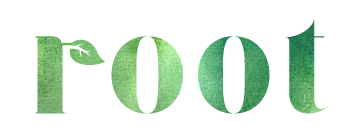








 Dr. Lars Gunnar DC, BS, is a family chiropractor and the founder of Vital Form Chiropractic in Pasadena California. A graduate of San Diego State University and Southern California University of Health Sciences. Along with practicing the Gonstead system he has advance training in sport and extremity injuries, pregnancy care, pediatric development and scoliosis. Several individuals were instrumental in learning these skills including: Dr. Brad Ping, Dr. David Fowler, Dr. Jeremiah Thompson, The Gonstead Seminar staff, Dr. Ian Rossborough, Gonstead Methodology Institute and The Gonstead Clinical Studies Society. Dr. Gunnar’s goal is to inspire people to take control over their own health and to strive to be the highest expression of themselves.
Dr. Lars Gunnar DC, BS, is a family chiropractor and the founder of Vital Form Chiropractic in Pasadena California. A graduate of San Diego State University and Southern California University of Health Sciences. Along with practicing the Gonstead system he has advance training in sport and extremity injuries, pregnancy care, pediatric development and scoliosis. Several individuals were instrumental in learning these skills including: Dr. Brad Ping, Dr. David Fowler, Dr. Jeremiah Thompson, The Gonstead Seminar staff, Dr. Ian Rossborough, Gonstead Methodology Institute and The Gonstead Clinical Studies Society. Dr. Gunnar’s goal is to inspire people to take control over their own health and to strive to be the highest expression of themselves.














Recent Comments